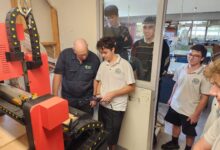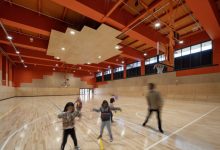Classroom furniture: Learning space design
We explore the latest design trends and furniture options to make the most of your learning and teaching environments.
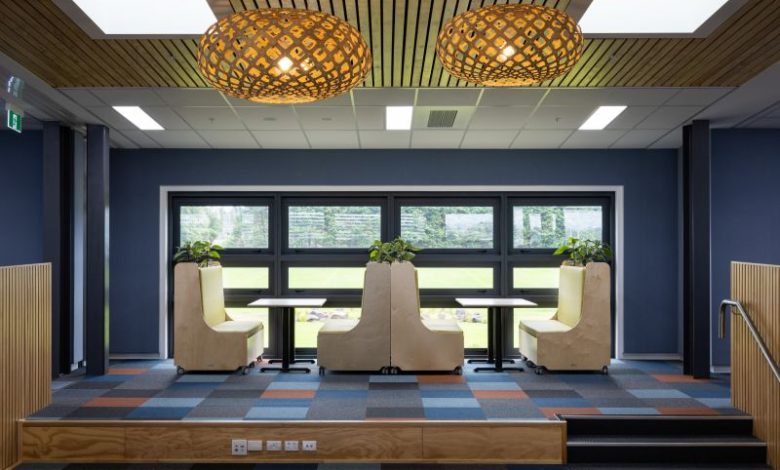
A well designed and laid out classroom can have a significant impact on learning and teaching.
But with trends and research changing constantly, it can be difficult to know what current best practice for the learning environment is.
Read the latest print edition of School News HERE
One trend that has continued to grow in recent years is the rise of flexible seating and flexible classrooms. In direct contrast to the standard classroom setup of yesteryear, flexible classrooms encourage students and teachers to curate their own learning environment to suit their needs.
Students love flexibility
Research shows three quarters of primary and secondary students in Australian and New Zealand schools learn in traditional classrooms. The majority of these classrooms have uniform desks and chairs facing the teacher at the front of the room.
While some teachers can teach well in this traditional setting, evidence suggests more flexible learning environments are associated with deeper learning.
Deep learning is when students go beyond learning facts. They instead apply knowledge to their context, using critical and creative thinking skills to engage in learning they are curious about.
Melbourne University researchers surveyed 300 students in 2020, to determine what the students themselves thought about flexible learning. About 93 percent said flexible furniture helped them learn better.
The most popular types of furniture were high tables with height adjustable stools, round or triangular-shaped tables that promoted collaboration, and soft seating like ottomans. Students said having options meant they could choose furniture to meet their physical and other learning needs.
More than half (54 percent) of students said comfort was the main reason for their furniture selection. They preferred furniture where they could adjust their position if working in one place for long periods of time.
Students also chose furniture they said helped them learn better. They preferred furniture they could move to support concentration, and facilitate independent and collaborative work. Students said they made decisions about the arrangement of furniture to manage their behaviour in class. Seating options such as gym balls or wobble stools were also important for students who felt they had extra energy to burn.
With this in mind, flexible furniture is clearly a popular choice for students, allowing them greater agency in selecting the best seating options for their learning.
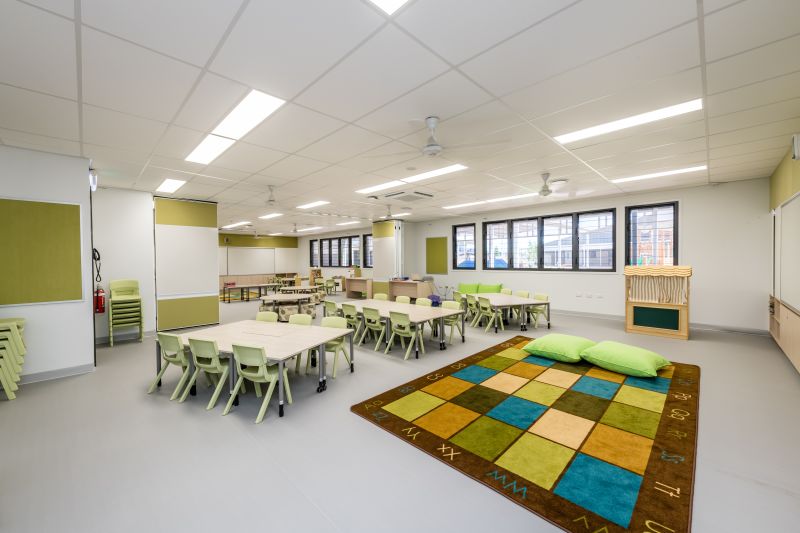
Catering to everyone
Traditional classroom setups may not always cater to the diverse needs of all students, who may require specific accommodations for physical, sensory, or attention-related challenges.
Implementing flexible seating allows for classroom customisation based on individual requirements, promoting a more inclusive and comfortable environment. For instance, students with mobility issues may benefit from options such as adjustable desks or alternative seating like stability balls or cushions, providing them with greater flexibility and ease of movement.
Moreover, flexible seating can accommodate various sensory preferences, addressing the needs of students with sensory sensitivity. Incorporating sensory-friendly seating options such as beanbags provides options for students who may be prone to overwhelm in the classroom. This approach fosters a supportive atmosphere that promotes participation, independence, and a positive attitude towards learning, ultimately contributing to the holistic development of every student.
Through embracing lightweight and easily movable pieces, educators can quickly reconfigure the learning environment. This flexibility empowers teachers to adapt the classroom layout to different activities and teaching methods, promoting dynamic and interactive learning experiences.
Breakout spaces
For Māori and Pasifika students, a 2016 study of classroom design on Māori and Pasifika student outcomes found that breakout spaces allow greater peer support. This can make students feel more comfortable asking or answering questions when they’re learning in a large group.
A variety of seating options can help promote flexibility in the classroom. Flexible seating provides tamariki with a variety of seating options in the learning space, allowing them freedom to choose where they sit and the way in which they feel most comfortable to learn.
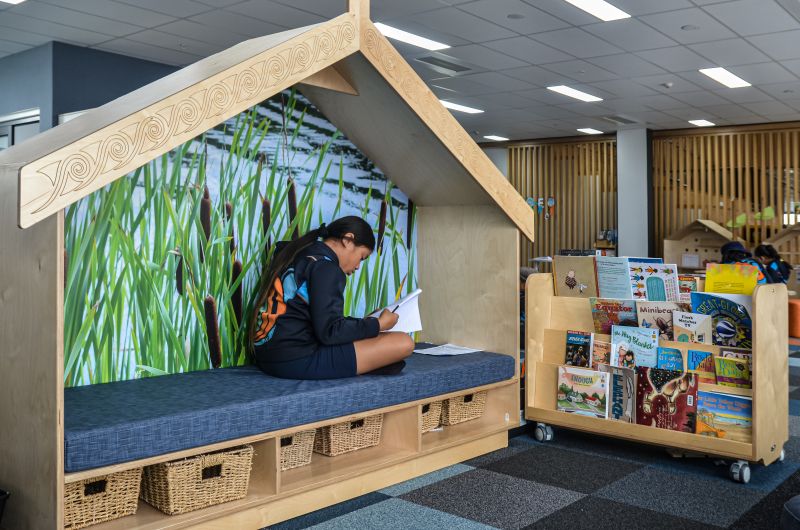
This could look like chairs, stools or sofas, or kneeling cushions and beanbags. For all students, flexible seating allows them to choose seating options that best suit their needs, helping them to feel comfortable, and ready to engage in learning.
Colour and design trends
When it comes to colour and overall aesthetics, the importance of a well-considered and designed learning space cannot be overstated.
In a landmark 2015 study, researchers found that students are more frequently off task when visual clutter overwhelms “their still-developing and fragile ability to actively maintain task goals and ignore distractions.”
Instead, research suggests educators should work towards a ‘middle ground’, where the learning space is not overly cluttered but still embraces colour and materials that speak to the natural environment.
A 2021 study found that classroom spaces that are conducive to learning should feel natural and fresh, not cramped and stuffy. “Students reported less stress and were more focused on a task in classrooms with more natural window views,” researchers noted.
Orientating classroom design to embrace natural light also supports the importance of Tamanuiterā in Māori culture, and creates links between students and the natural environment outside the learning space. Greenery and natural views from windows are important for classrooms. A connection to nature can also be fostered by bringing in hanging plants, planters and other natural decorations.
When researchers added potted plants to high school classrooms, older students expressed greater satisfaction in their surroundings, paid more attention in class, and rated the lessons and their teachers higher, a 2020 study found. Researchers noted, “students displayed stronger feelings of friendliness and comfort in the presence of these plants.”
In addition to greenery and natural light, embracing materials such as timber and other natural fibres in furniture design can help to create a calm and inviting environment well-suited for learning.
From the industry experts
Heinz Woodman from Learning Spaces Global recommends furniture on wheels to promote classroom flexibility. “Another great way to add flexibility is to ensure you have a range of desk and chair heights. Kneeling, sitting, high stools or standing desks are available, and we would recommend having a range of these throughout your open learning space. Providing options in where and how a student can sit gives them a sense of freedom and ownership of their learning, and can lead to greater focus.”
For collaboration, Mr Woodman said campfire seating where curved sofas and desks are set up in a c shape, focusing on the teacher at the front, is a powerful and engaging setup that sparks creativity.
“Bringing colours from nature indoors is essential in today’s urbanised world. Biophilic design (bringing the outdoors in) has been proven to reduce stress, enhance creativity and clarity of thought and improve wellbeing. Incorporating these colours in your learning space means teachers and students alike gain headspace and therefore a place where creativity thrives.”
Mr Woodman pointed to two key considerations when thinking about classroom storage — student bag storage and classroom resources storage. “Cubby lockers with doors or bag hook trolleys are a great tidy way to remove student’s bags from the clutter of a learning space. Tote Tray storage is an organised and effective way to store classroom resources. Having the tote tray storage units on wheels means you can reposition these.”
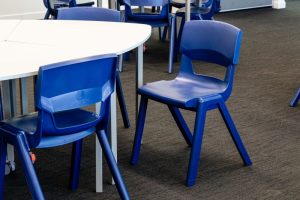
Michael Hellyer from Sebel said when designing learning spaces, it is important to use different colour combinations to create zones. “The colour theme should remain consistent within each zone, evoking a certain emotion when a student enters. This allows students to self-select a space that best suits their sensory, behavioural and wellbeing needs.
“Students spend a significant portion of their day sitting, so chairs and desks should be tailored to support proper posture and reduce discomfort, contributing to physical wellbeing. When furnishing learning spaces, the first item to consider is the desk or table height, which is then matched with a corresponding sized chair or stool.”
To facilitate ease of movement and accessibility, Mr Hellyer recommends accessways be kept clear and classrooms should be uncluttered. “Having a chair or stool that can be tucked away or stacked is hugely beneficial for accessibility.”
Classroom clutter can be further decreased with furniture items that are dual purpose. “For example, a mobile tote seat offers both a place to sit and the practicality of storage. Desks with drawers are another example, where students can tidy away their books and supplies at the end of the day.
“If your space requires a secure place to stow away important items, opt for lockable storage.”







